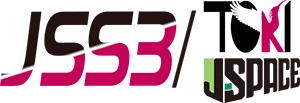Numerical Study on Aerodynamic Characteristics of Reusable Slender Body Configuration
JAXA Supercomputer System Annual Report February 2024-January 2025
Report Number: R24EACA12
Subject Category: JSS Inter-University Research
- Responsible Representative: Keiichi Kitamura, Yokohama National University, Faculty of Engineering, Associate Professor
- Contact Information: Keiichi Kitamura, Yokohama National University, Faculty of Engineering, Associate Professor(kitamura@ynu.ac.jp)
- Members: Yuka Hara, Hibiki Kumai, Keiichi Kitamura, Tomohiro Mamashita
Abstract
As space exploration becomes more active, a demand for more frequent and economical space transportation systems is increasing. Therefore, researches on reusable launch vehicles are being conducted around the world, including JAXA. Establishment of a return flight technology is essential for the practical application of the reusable launch vehicles, and understanding the aerodynamic characteristics of the vehicle is crucial for supporting this task. In this study, wind tunnel tests and numerical fluid dynamics simulations are used to obtain the aerodynamic characteristics of reusable rockets and to investigate the flow field during the reusable rocket flight. In particular, we will focus on the dynamic aerodynamic characteristics and high angle-of-attack aerodynamic characteristics during the turning motion, and work on understanding the aerodynamic characteristics and their mechanisms under each condition.
Reference URL
N/A
Reasons and benefits of using JAXA Supercomputer System
Wind tunnel tests can visualize the flow field on the surface of the vehicle, but it is difficult to visualize the flow field around the vehicle. Therefore, numerical calculations are performed to visualize the three-dimensional flow field around the vehicle to clarify the effect of the vortex formed around the vehicle on aerodynamic characteristics. In addition, the dynamic analysis and high angle-of-attack analysis described above were performed using the JAXA supercomputer because of their high computational cost. These research results will greatly contribute to the realization of reusable rockets.
Achievements of the Year
This study assumes the return flight of a reusable rocket. We conducted "dynamic" analysis with the angle-of-attack continuously changed from 0 to 180 degrees and "static" analysis with the fixed angle-of-attack, i.e., zero turn speed, to investigate the effect of the turning maneuver on the flow field and aerodynamic coefficients by comparing these two analyses. The results showed that the twin vortices collapsed at 90 degrees in the static analysis, whereas they did not in the dynamic analysis but were maintained up to about 100 degrees. In the dynamic analysis, this indicates that the flow field at the preceding angle affects the flow field and aerodynamic coefficient at the subsequent angle and thus provides insight into the return flight.
Publications
- Oral Presentations
Yuka Hara, Dynamic Simulation of Reusable Rocket Aerodynamics Turning 0-to-180 Degrees Angle-of-Attack before Landing, AIAA Aviation Forum 2024.
Usage of JSS
Computational Information
- Process Parallelization Methods: MPI
- Thread Parallelization Methods: OpenMP
- Number of Processes: 16 - 960
- Elapsed Time per Case: 240 Hour(s)
JSS3 Resources Used
Fraction of Usage in Total Resources*1(%): 0.11
Details
Please refer to System Configuration of JSS3 for the system configuration and major specifications of JSS3.
| System Name | CPU Resources Used(Core x Hours) | Fraction of Usage*2(%) |
|---|---|---|
| TOKI-SORA | 2133733.53 | 0.10 |
| TOKI-ST | 54014.98 | 0.06 |
| TOKI-GP | 0.00 | 0.00 |
| TOKI-XM | 0.00 | 0.00 |
| TOKI-LM | 324.01 | 0.02 |
| TOKI-TST | 0.00 | 0.00 |
| TOKI-TGP | 0.00 | 0.00 |
| TOKI-TLM | 0.00 | 0.00 |
| File System Name | Storage Assigned(GiB) | Fraction of Usage*2(%) |
|---|---|---|
| /home | 1184.17 | 0.80 |
| /data and /data2 | 104718.33 | 0.50 |
| /ssd | 10876.67 | 0.58 |
| Archiver Name | Storage Used(TiB) | Fraction of Usage*2(%) |
|---|---|---|
| J-SPACE | 46.25 | 0.15 |
*1: Fraction of Usage in Total Resources: Weighted average of three resource types (Computing, File System, and Archiver).
*2: Fraction of Usage:Percentage of usage relative to each resource used in one year.
ISV Software Licenses Used
| ISV Software Licenses Used(Hours) | Fraction of Usage*2(%) | |
|---|---|---|
| ISV Software Licenses(Total) | 2431.84 | 1.66 |
*2: Fraction of Usage:Percentage of usage relative to each resource used in one year.
JAXA Supercomputer System Annual Report February 2024-January 2025


